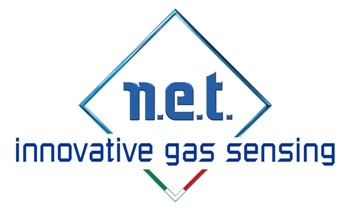Nano Environmental Technology (N.E.T.) produces a varied choice of optical gas sensors for carbon dioxide, flammable gas, refrigerants and SF6. To make them as user-friendly as possible, each sensor is equipped with all necessary driver circuitry on-board.
Optical Gas Sensors
They are mainly offered in two distinct sizes of housing: either as a 20 mm diameter cylindrical device or as 32 mm diameter device.
.jpg)
N.E.T. often receive enquiries from customers on the difference between the two versions, with many believing that, where a choice is available, it is preferable to select the most compact package possible in order to minimize the space taken up inside their instruments and offer greater space for other functions, including larger batteries, wireless capability and more.
For customers who are developing products where space is truly at a premium, such as devices intended for portable use, this is largely accurate and indeed, even the smaller N.E.T. sensor delivers exceptional performance and capability.
Larger Versions of Optical Gas Sensors and their Applications
On the other hand, for many designers of instruments, particularly in fixed systems, where size is not an issue, it is frequently more desirable to opt for the larger version of the sensors, over its more compact counterpart.
For a number of gases, including refrigerants and SF6, the larger sensor is the only feasible option, as a 20 mm package would not offer a sufficiently large optical path to competently detect those gases.
Therefore, if you intend to measure carbon dioxide, or especially flammable gases, and space is available in your design, it is recommended that you select the larger sensor, as this allows for the incorporation of a longer path length between the optical source and the pyro-electric detectors within.
A longer path length offers a number of advantages:
- Resolution – as the quantity of infra-red light absorbed by a target gas is proportional to the quantity of gas in the light path, a longer path translates to greater light absorption. The greater absorption permits the sensor to resolve to lower gas concentrations, which means that the user can perceive ever more minor variations in gas concentration.
- Stability – a greater path length and larger signal means that any minor changes caused by drift over time are proportionally less significant. Therefore, signal stability over time is improved and the frequency of false alarms is reduced. Furthermore, a larger sensor could offer the means to lessen the frequency of calibration, leading to a significant reduction in maintenance costs over the lifespan of the instrument.
- Humidity – as with signal drift above, variations resulting from ambient humidity are proportionally less significant with a larger output signal. As a longer path length offers a greater output signal, the influence of changes resulting from humidity is significantly lessened.
- Cross sensitivity – it is in the nature of optical sensors to be sensitive to variations in light absorption. As a large number of gas sensors can absorb infra-red radiation, a feature of IR sensors is that they are sensitive to a variety of target species.
A sensor with a greater path length allows N.E.T. to deliver a more selective response to the required gas and to decrease or eradicate responses to other non-target gases.
.jpg)
Conclusion
For these reasons, it is advised that wherever possible, customers designing fixed systems consider the application of larger housing sensors.
N.E.T. firmly believes that the use of their longer path sensors offers a significant competitive advantage, and allows the greatest performances for a gas detector to be attained.

This information has been sourced, reviewed and adapted from materials provided by Nano Environment Technology (N.E.T).
For more information on this source, please visit Nano Environment Technology (N.E.T).